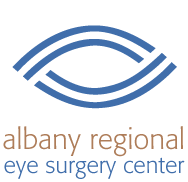cataract eye operation or procedure.
What is a Cataract?
Cataracts are a clouding of the eye's lens, a common occurence as we age. In fact, 80% of people over the age of 60 have cataracts. Cataract eye surgery is the U.S.'s most commonly performed surgical procedure is one of the most successful surgeries due to its fast recovery time and the improvement in quality of a patient's life.
Rays of light travel into our eye through the pupil and are focused through the lens onto the retina, a layer of light-sensitive cells at the back of the eye. To properly focus light onto the retina, the lens must be clear. The onset of cataracts are so slow that you may not even notice it, except that one day you'll notice your ability to perform typical daily tasks, like driving, becomes somewhat impaired because your eye’s normally transparent crystalline lens becomes clouded. This is known as a cataract.
Do I need Cataract Surgery?
A cataract does not need to be removed quickly if your lifestyle isn't majorly affected. In some cases, it is as simple as switching your eyeglass prescription to improve your vision. Once your doctor has diagnosed you with a cataract, your ophthalmologist will have to monitor your vision consistently for any changes.
treatment and prevention.
What can I do?
Even though cataracts are a popular cause of vision loss, they are treatable with cataract surgery. Since cataracts are part of the typical aging process, they cannot be reversed or helped with the use of medications or eye drops.
Cataract surgery consists of your eye's cloudy natural lens being removed and replaced with a clear artificial lens implant (called an intraocular lens, or IOL). A permanent artificial lens is then implanted to replace the cataract lens. The patient receives local anesthesia to numb the eye and remains awake during the procedure.
For more information about this or any other eye procedures, please click here for a list of all the fine surgeons who work out of Albany Regional Eye Surgery Center.
learn more.

To learn more about the latest treatments and a glossary of terms, visit our patient education section. If you have any other questions, please contact your surgeon or the center anytime.






